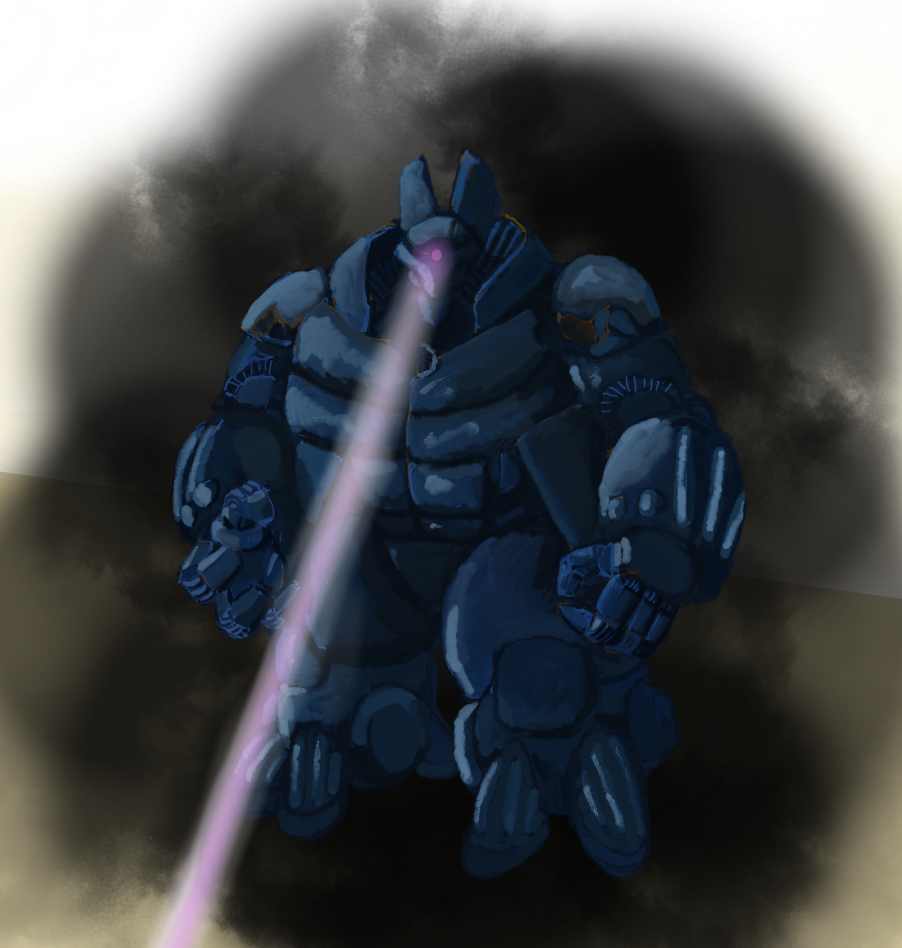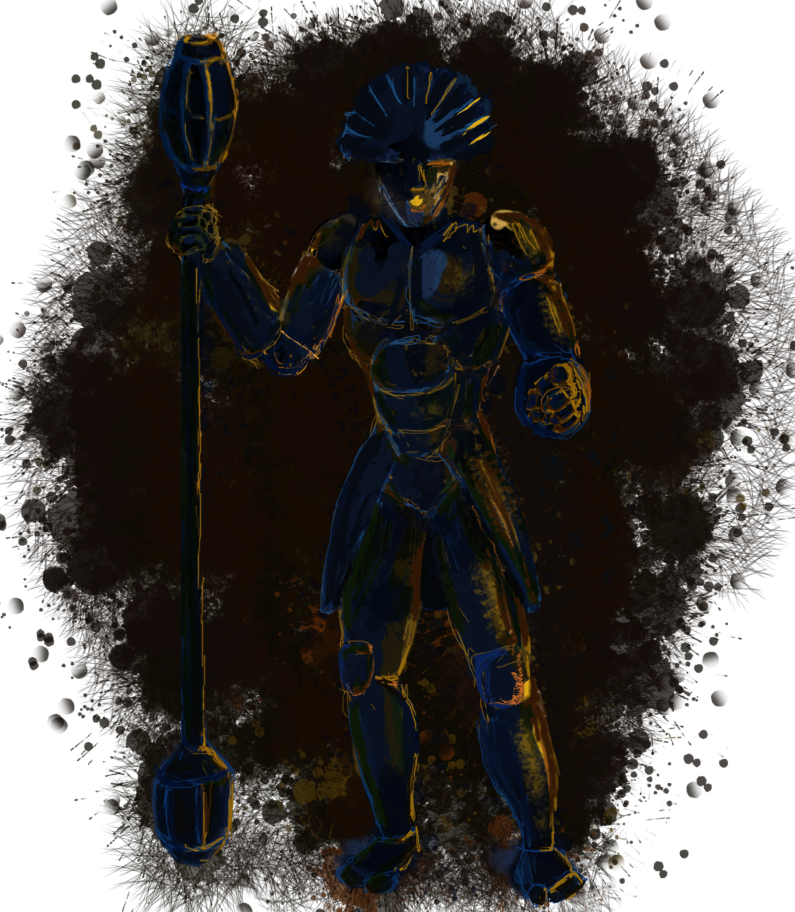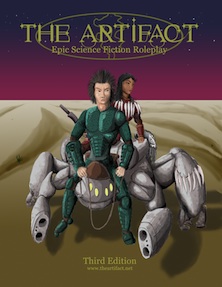I’m working on further changes for a fourth edition. The biggest structural changes is in the numbers used.
Numbers
I love the granularity of the percentile system. What I don’t love is the two digit math that it requires. It’s not a huge deal for any individual roll but it becomes tiresome over the length of a game. This is to make the math in the game simpler. Unfortunately there is a reason I used a percentile system in the first place and this change is going to remove some structures I love.
Did I mention no more d10s bouncing off each other and flying across the room? Yeah, I won’t miss that.
Instead of a percentile system, The Artifact is moving to a d10 range. This will mean a lot of changes. For the most part, this means that Fraction columns will no longer be universal. You’ll always have the full value of the column but an attribute of 1 (the current value of 10) will not have a 1/2 column. Attributes lower than 4 will not have a 1/4 column result and lower than 8 will not have a 1/8th column.
|
Full |
1/2 |
1/4 |
1/8 |
| Con |
3 |
1 |
|
|
| Str |
2 |
1 |
|
|
| Ref |
5 |
2 |
1 |
|
| Agi |
6 |
3 |
1 |
|
| Dex |
4 |
2 |
1 |
|
| Cha |
8 |
4 |
2 |
1 |
| Int |
1 |
|
|
|
| IQ |
3 |
1 |
|
|
| Psy |
4 |
2 |
1 |
|
Skills
The skill list is being cut down by half, so that will simplify things a lot. However because of the changes to the attributes, skills are going to have to do some more heavy lifting. I’ve wanted skills to more fully integrate with the fraction columns since I started. Reducing the skill list is going to make that possible.
To fill in the lack of fraction columns, skills will have four values.
| Pilot Automobile |
+3 |
+2 |
+1 |
+1 |
Most NPCs will have a main skill that corresponds with what they need to do a job.
Successes
Fractional Successes have been a part of The Artifact for a long time. They’re going away though.
The thing is, the “fractional” part is a bit superfluous. It is descriptive but the point is that they give you a number of successes.
The stat block will look more like this now. These are Success Columns.
|
1 |
2 |
3 |
4 |
| Con |
3 |
1 |
|
|
| Str |
2 |
1 |
|
|
| Ref |
5 |
2 |
1 |
|
| Agi |
6 |
3 |
1 |
|
| Dex |
4 |
2 |
1 |
|
| Cha |
8 |
4 |
2 |
1 |
| Int |
1 |
|
|
|
| IQ |
3 |
1 |
|
|
| Psy |
4 |
2 |
1 |
|
I didn’t like how the names of the fraction columns had to be translated into a number of successes. Although most players had no problem with it, some struggled.
Social Exchanges
Social rules are changing, a set of conditions will be used to structure interactions. This is something I’ve been trying to figure out for a long time. I always wanted some kind of moves or tactics for social interaction. Hopefully these will provide them.
To initiate a Social Exchange the character rolls for a Charisma or IQ, adding in applicable skills. The attribute used changes the possible effects of the exchange. If the check is passed, they select a condition that they will present. The condition lasts for one turn per success.
The defender rolls against Psyche or IQ. Any successes reduce the length of the effect.
If the initiator is successful, they present their chosen condition. The defender may accept it or reject it and pick another condition from the list and take a penalty. The penalty is one mental stress per success left over from the roles.
The conditions and their effects are as follows.
Attachment (Cha)
The effected feels some kind of attachment, whether amusement, affection or camaraderie with the initiator. The effected gets a 40% Impairment to any hostile action against the initiator while this condition is in effect.
Aggression (IQ or Cha)
The effected feels hate, anger, loathing, or indignation toward the initiator. They must focus hostile actions on the initiator and have a 20% Impairment to IQ and Intuition based tests while this is in effect.
Passive (IQ or Cha)
The effected is either soothed, perplexed, lost or troubled. They lose two actions each turn the condition is in effect.
Coercion (IQ or Cha)
The effected is intimidated by fear of loss or enticed by some kind of situationally significant bribe. Large bribes may give an Advantage to the initiator’s roll. The effected loses 1 action if they do not use it to carry out a task specified by the initiator as long as the condition is in effect.
Conformity (Cha)
The effected is under peer pressure to act as others in their social group or class is behaving. They must follow a behavior that at least appears to be what the majority is doing as long as the condition is in effect.
The initiator can only present a condition if they rolled under an appropriate stat. The effected may choose any of the conditions they desire, including conformity but they conform to their own group. If they are not allied with the initiator they will do what they feel is expected of them by their allies.
If the initiator can get the same effect on a character three times, they form a relationship based on it and get a bonus to initiate that condition again. Mark down the relationship and the condition it gives a 20% Advantage to initiate an exchange presenting that condition on the initiator’s character sheet. Each subsequent three rolls on the relationship increases the Advantage by 10% to a maximum of 60%. They may track up to five of these relationships at any time.
Attack Conditions (WIP)
The following conditions are replacements for hit location tables for people and vehicles and critical hit effects for individuals. This removes a required roll. These need polish but their intent is mostly there.
Target hit
The target has been hit by the attack. The first success must be spent on this condition. For multi-round bursts one in five attacks hit their target per success spent. Weapons with a rate of fire higher than one can spend an additional success to hit another target with one in five of the rounds fired hitting that target. If the target takes damage from this attack they also take 10 physical stress.
Avoid Armor
Cut Armor Rating of a target in half. Selecting a second time cuts the AR in half again.
Avoid Shields
Avoid half the hit points of a target’s shields. Selecting again avoids shields entirely.
Damage Gear
Damage something worn, carried or handled by the target. Half damage goes to the gear. If this option is selected again, all damage goes to the selected gear.
Wear Down
Cause stress or ensure a critical hit. Induce 10 Stress of choice or ensure a critical on a vehicle. (can this be selected if the attack did no damage due to armor? For people that makes some sense, for vehicles, not so much.)
Extra Damage
Subtract target’s shield HP, Armor Rating and armor HP then multiply remaining damage by 1.5 for one target. If selected again, the remaining damage is doubled for that target. Attacker picks hit location.
Lower Damage
This condition can be freely selected as long as the target was hit, this condition does not cost a success to take. Reduce damage done by half but gets another condition. If selected again, damage is reduced to one quarter. Beam weapons can use this condition to do half damage to two targets and if selected again, do quarter damage to three targets. Defender picks hit location.
Vehicles and Shields
In very early versions of The Artifact, shields were supposed to be resource hogs. Early attempts at making that a thing in game were very complicated. Recently I thought of putting the Action economy to use to accomplish this goal.
Vehicles will add actions to the pilot’s actions per turn according to how many shield generators they currently have.
Vehicles must use actions if they want to raise a fire arc’s shield each turn. This includes the possibility of raising double shields on a fire arc, costing two actions.




 The Free RPG Blog
The Free RPG Blog